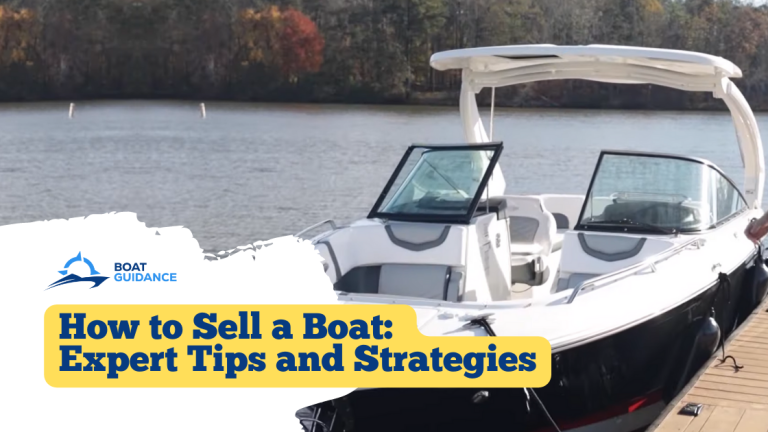How to Tie a Boat Cleat: Ultimate Guide for Secure Docking
When it comes to boating, one essential skill every sailor should possess is the ability to tie a boat cleat securely. Properly tying a boat cleat ensures the safety of your vessel and allows for hassle-free docking. Whether you’re a seasoned sailor or a beginner, mastering this skill is crucial. You must learn How to Tie a Boat Cleat if you want to peruse it as a career.
In this comprehensive guide, we will walk you through the step-by-step process of tying a boat cleat, providing you with expert tips and tricks along the way. So, grab your ropes and let’s dive in!
How to Tie a Boat Cleat: Steps to Follow
Tying a boat cleat is a fundamental skill that every boater should learn. Follow these simple steps to ensure a secure tie:
Step 1: Prepare the Rope
Before you begin, make sure you have a suitable rope of adequate length. Nylon or polypropylene ropes are popular choices due to their strength and durability. Ensure the rope is free from any knots or tangles before proceeding.
Step 2: Form the Initial Loop
Start by forming an overhand loop near the end of the rope. Make sure the loop is large enough to fit over the boat cleat.
Step 3: Wrap the Rope
Take the working end of the rope and wrap it around the base of the boat cleat, going away from the loop. Wrap the rope tightly to create a secure foundation for your knot.
Step 4: Cross the Rope
After wrapping the rope, cross it over itself to form a loop. Ensure that the loop is oriented in the opposite direction of the initial loop.
Step 5: Create a Second Loop
With the working end of the rope, create a second loop by bringing it back towards the cleat. Pass the rope through the loop you formed in the previous step.
Step 6: Tighten the Knot
Grasp the loops firmly and pull them tight, ensuring the knot is secure. Test the knot by applying gentle pressure to ensure it holds.
Step 7: Finishing Touches
Trim any excess rope, leaving a tail of about six inches. This tail will serve as a handy reference point for future adjustments or unties.
Remember, practice makes perfect. Repeat these steps until you can confidently tie a boat cleat without referring to instructions.
Tips for Tying Boat Cleats with Ease
Tying a boat cleat may seem daunting at first, but with these expert tips, you’ll become a pro in no time:
Keep the Rope Taut:
Ensure the rope remains taut throughout the tying process. This prevents any slack that may loosen the knot over time.
Master the Bowline Knot:
The bowline knot is a versatile knot used for securing ropes to cleats. Practice tying this knot to expand your repertoire of boating skills.
Invest in Quality Rope:
Using high-quality ropes ensures reliability and longevity. Inferior ropes are prone to fraying, which compromises the integrity of your knots.
Double Up for Added Security:
When dealing with larger vessels or challenging docking conditions, consider doubling up your lines. This provides extra stability and peace of mind.
Regularly Inspect and Retie:
Periodically check the condition of your ropes and knots. Replace worn-out ropes and retie cleats to maintain a safe and secure boating experience.
By incorporating these tips into your boating routine, you’ll enhance your knot-tying proficiency and ensure the safety of your vessel.
FAQs
Why is it important to tie a boat cleat securely?
A secure boat cleat tie is crucial to prevent your vessel from drifting away or colliding with other boats or the dock. It ensures the safety of both your boat and those around you.
What type of rope is best for tying a boat cleat?
Nylon and polypropylene ropes are popular choices due to their strength, durability, and resistance to water and UV rays. Choose a rope that suits your boating needs
Can I use any knot to tie a boat cleat?
While there are various knots you can use, the most commonly recommended knot is the cleat hitch knot. It provides a secure grip on the cleat and is easy to untie when necessary.
How do I know if my boat cleat is tied correctly?
A correctly tied boat cleat should hold the boat securely without any signs of slippage or loosening. Test the knot by applying gentle pressure and ensure it holds firm.
Are there any specialized knots for specific boating situations?
Yes, there are specialized knots for different boating scenarios, such as the figure-eight knot for securing fenders and the anchor hitch knot for anchoring your boat.
How can I untie a boat cleat quickly?
To untie a boat cleat quickly, simply reverse the steps used to tie the knot. Loosen the working end of the rope and unwrap it from the base of the cleat.
Conclusion
Mastering the art of tying a boat cleat is an essential skill for any boater. By following the step-by-step process outlined in this guide and incorporating expert tips, you’ll be able to tie a boat cleat securely and with confidence. Remember to choose high-quality ropes, regularly inspect your knots, and practice different tying techniques. With time and practice, you’ll become a seasoned sailor capable of handling any docking situation. So, set sail with the knowledge gained from this guide and enjoy your boating adventures to the fullest!






